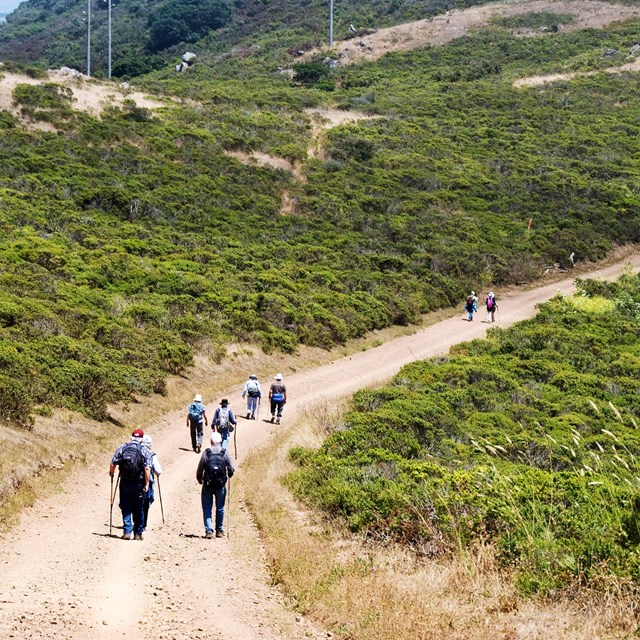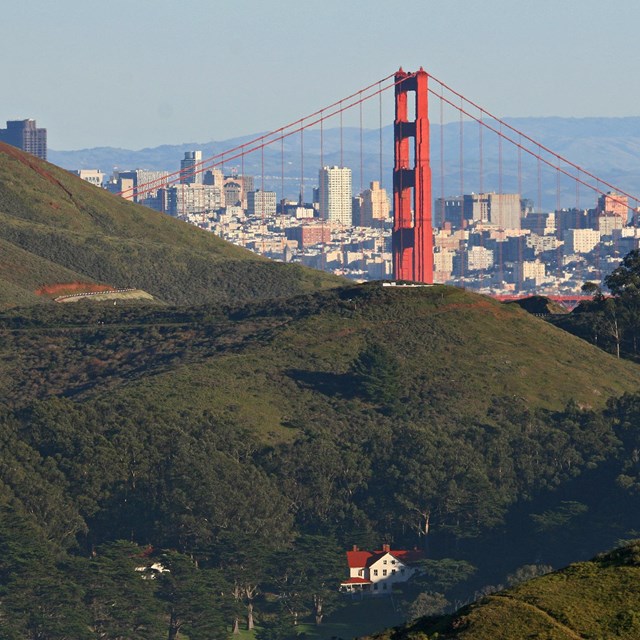Tips and Highlights
-
Park at the Smith Parking Lot, across the street from The Presidio Riding Club along Bunker Road.
-
Take a backcountry hike partway up the Bobcat or Miwok trails.
-
Keep a sharp eye out for bobcat on a warm day or deer at twilight.
-
Enjoy the wildflower extravaganza each spring.
Nature
Bobcats
Though bobcats (Lynx rufus) are largely creatures of the night, they can often be seen in the Headlands during the early morning or evening hours-perhaps hunting rodents or rabbit. Bobcat paw marks and scat dot the Headlands, but many mistake their tracks for those of the more elusive mountain lion. Bobcats are most likely to be seen in the Gerbode and Tennessee valleys on nice spring and summer days.
Coyotes
Coyotes (Canis latrans) frequent Gerbode Valley as they hunt bush rabbits and ground squirrels. Look for their tracks and scat on the trails! Canine (dog) tracks differ from feline (cat) tracks in two key ways: 1) Canine tracks have claw marks, feline tracks do not 2) The front of a canine heel pad has 1 lobe, whereas the front of a feline heel pad has two lobes. Coyotes are essential to health of Marin Headland's ecosystem! Learn more about coyotes.
Birds
The Marin Headlands is a stop along the Pacific Flyway, a migration route traveled by at least a billion birds every year. Look overhead for soaring turkey vultures, osprey, hawks, kites, and eagles. California quails frequently rustle through the bushes. Hermit thrush visit in winter, and populate the Headlands with their strikingly beautiful and haunting song.
Wildflowers
In the spring, Marin's headlands, hills, and valleys burst with color. The area's foggy coast and dry interior, its hodgepodge of soils, and its many fresh and saltwater zones provide an unusual diversity of wildflower species. Some of the best flower walks are on the Point Bonita Lighthouse, Tennessee Valley, Coastal, Wolf Ridge, and Miwok trails.
Grasses
As part of a parkwide effort to replace invasive species with natives, the National Park Service has been planting native bunch grass in the valley, once overrun by hoof-proof grazing grasses introduced by the Spanish.



